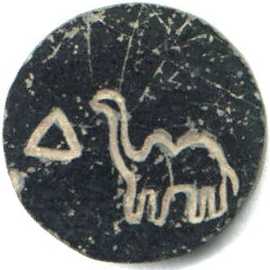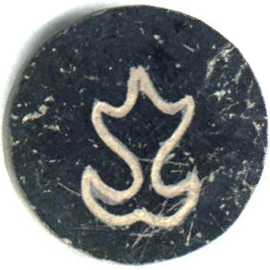| SPECIFICATIONS | ||
| Material | Pottery | |
| Type | Polished | |
| Diameter | 22.3 mm | |
| Thickness | 3.0 mm | |
| Weight | 2.10 gms | |
| Shape | Circular | |
| Edge | smooth | |
| DieAxis | O° | |



|

| 
| |||||||||||||||||||
| Unpublished | 
| ||||||||||||||||||||
This Black Disk looks to me to be like polished slate. In the 1999 catalog by Osmund Bopearachchi and Rajah Wickramasinhe titled Ruhuna. An Ancient Civilization Re-visited , they are listed under Miscellaneous Objects as Black rouletted Ware (N.1-N.6). The symbols are different from those on the Black disks but the same as the lead coin E.17 of the same publication. It was obtained directly from the farmer who dug it out via the same collector who provided most of the items for that book.
The fact the symbols on this Black Disk are frequently found on Lankan
coins which makes this a very interesting item. The elephant and
Srivatsta are associated in early Sangam age Thamil coins
(R. Krishnamurthy 1997 (#211,#212).
The prominent hump on head of Elephant appears to be like from a now
extinct spieces found in Lanka.
Someone commented to me that the Elephant looks like a dinosaur.
If anyone has information on the age or usage of items like it please let me know details about it. Many have commented that this item looks too smooth to be of ancient fabrication and I think so too. I am very keen on having it analysed.
The coin was scanned at 300 dpi and displayed at 250 dpi. The Edge was scanned at 600 dpi. It was obtained in 2001 December directly from farmer who found it via Mr A. Ratnayaka a collector in Katharagama, Lanka.